Filter by
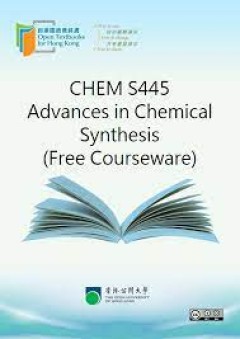
Advances in Chemical Synthesis
Organic chemistry belongs to a branch of chemistry that is generally associated with compounds containing carbon. It is so important because millions of compounds that contain carbon are related to our daily lives, so organic chemistry has many close connections with living things. For examples, amino acids can react together to form proteins, which help constitute the essential compounds of …
- Edition
- -
- ISBN/ISSN
- -
- Collation
- -
- Series Title
- -
- Call Number
- 540 OPE a
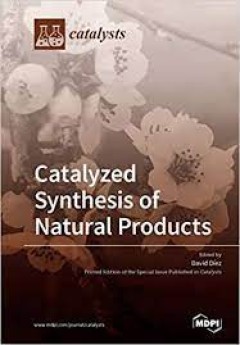
Catalyzed Synthesis of Natural Products
Natural products have been a source of inspiration for chemists and chemical biologists for many years, and have a special relevance in the chemical space. In recent years, several novel synthetic strategies have appeared, such as diversity-oriented synthesis (DOS), biological-oriented synthesis (BiOS), and function-oriented synthesis (FOS), for accessing complex and functionally diverse molecu…
- Edition
- -
- ISBN/ISSN
- 978-3-03921-949-0
- Collation
- -
- Series Title
- -
- Call Number
- 547 CAT

Stepped-Frequency Radar Sensors Theory, Analysis and Design
This book presents the theory, analysis and design of microwave stepped-frequency radar sensors. Stepped-frequency radar sensors are attractive for various sensing applications that require fine resolution. The book consists of five chapters. The first chapter describes the fundamentals of radar sensors including applications followed by a review of ultra-wideband pulsed, frequency-modulated co…
- Edition
- 1
- ISBN/ISSN
- 978-3-319-12271-7
- Collation
- -
- Series Title
- 1 b/w illustrations, 80 illustrations in colour
- Call Number
- VIII, 129

Stem Cells: Basics and Clinical Translation
This book provides a comprehensive review of the properties of various stem cell types, the mechanisms of their behaviors and their potential clinical application. Stem cells have a great capacity of self-renewal and differentiation. They represent new paradigms for disease treatment in the field of regenerative medicine since the day they were discovered. As stem cell research is complicated a…
- Edition
- 1
- ISBN/ISSN
- 978-94-017-7273-0
- Collation
- -
- Series Title
- 5 b/w illustrations, 34 illustrations in colour
- Call Number
- XIII, 510
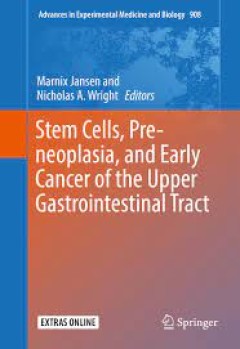
Stem Cells, Pre-neoplasia, and Early Cancer of the Upper Gastrointestinal Tract
This book is a comprehensive understanding of the evolution of pre-malignant disease, emphasizing common themes in the field, including stem cell biology and histologic modes of cancer progression between the distal esophagus and stomach. Its sixteen chapters discuss metaplastic tissue change in the upper GI, clonalexpansion of early neoplasia, stem cell dynamics in experimental models, pathol…
- Edition
- -
- ISBN/ISSN
- 978-3319413860
- Collation
- -
- Series Title
- -
- Call Number
- -

Stem Cells in the Lung Development, Repair and Regeneration
This book presents a comprehensive overview of the current understanding of the organization of endogenous lung stem and progenitor cell compartments during fetal lung development, postnatal lung growth and in adulthood. Progressing stage by stage, the chapters on fetal lung development emphasize the integrated role of epithelial, stromal, vascular and neural cell elements in building a functio…
- Edition
- 1
- ISBN/ISSN
- 978-3-319-21082-7
- Collation
- -
- Series Title
- XIV, 366
- Call Number
- XIV, 366
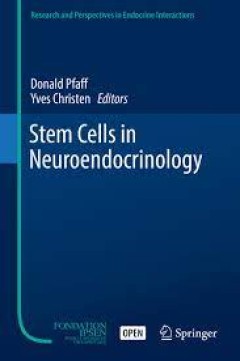
Stem Cells in Neuroendocrinology
This volume starts with an elementary introduction covering stem cell methodologies used to produce specific types of neurons, possibilities for their therapeutic use, and warnings of technical problems. In addition the authors report successes in achieving the derivation of a specific type of neuron. The dopamine neuron offers an important example and is discussed in more detail. Additional ch…
- Edition
- 1
- ISBN/ISSN
- 978-3-319-41603-8
- Collation
- -
- Series Title
- 16 illustrations in colour
- Call Number
- XII, 156
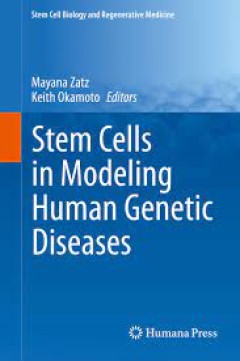
Stem Cells in Modeling Human Genetic Diseases
While most stem cell books focus on basic aspects and/or cell therapy, this book emphasizes the relevance of stem cells obtained from patients, the so-called “patients in a petri dish” as tools to investigate human genetic diseases for which there are no available effective treatment. Chapters embrace several examples of the use of iPS cell technology, a recent Nobel Prize-winning scientifi…
- Edition
- -
- ISBN/ISSN
- 978-3-319-18314-5
- Collation
- -
- Series Title
- 1 b/w illustrations, 15 illustrations in colour
- Call Number
- XII, 147
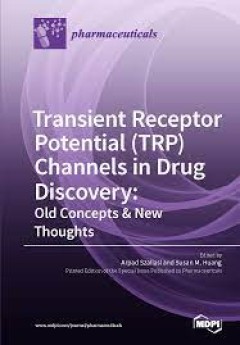
Transient Receptor Potential (TRP) Channels in Drug Discovery : Old Concepts …
The year 2017 marks the 20th anniversary of the molecular cloning of the long sought-after capsaicin receptor, now known as TRPV1 (Transient Receptor Potential Vanilloid 1). This seminal discovery has opened up a “hot” new field of basic research and launched drug discovery efforts into the large family (by the latest count, 28 mammalian members and 27 in humans) of TRP ion channels. Indeed…
- Edition
- -
- ISBN/ISSN
- 978-3-03842-638-7
- Collation
- -
- Series Title
- -
- Call Number
- 615 TRA
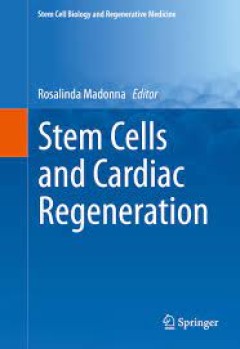
Stem Cells and Cardiac Regeneration
This book provides an update of recent advances in the basic and clinical applications of cell-based therapies for myocardial repair and regeneration in ischemic heart disease (IHD) and heart failure (HF). The first sections of the book illuminate basic aspects of stem cells such as definitions, isolation criteria and characterization of embryonic and adult stem cells, as well as pluripotent st…
- Edition
- -
- ISBN/ISSN
- 978-3-319-25427-2
- Collation
- -
- Series Title
- 8 b/w illustrations
- Call Number
- XXI, 205
 Computer Science, Information & General Works
Computer Science, Information & General Works  Philosophy & Psychology
Philosophy & Psychology  Religion
Religion  Social Sciences
Social Sciences  Language
Language  Pure Science
Pure Science  Applied Sciences
Applied Sciences  Art & Recreation
Art & Recreation  Literature
Literature  History & Geography
History & Geography